How gamification in email campaigns can improve engagement
-
Rita Kochevskaya
Copywriter Elbuz
Your inbox is a window to a world of opportunity. With one click you can open the door to an exciting journey full of surprises. Imagine that your email turns into a game, where each new level brings you closer to interesting offers and bonuses. Gamification in newsletters is a modern trend that is changing the way you interact with subscribers. It not only attracts attention, but also holds it, turning routine reading of mail into an exciting adventure. Companies that incorporate gaming elements into their email campaigns see increased recipient engagement and improved email open rates. Gamification not only increases interest in the content, but also helps to better remember and assimilate information. Read on to learn how to incorporate a gamified approach into your email campaigns to turn every email into an adventure!

Glossary
- 🎮 Gamification - application of game elements and mechanics in non-game contexts to increase engagement and user motivation.
- 💌 Newsletter - an email or series of letters sent to a company to inform, promote goods or services and interact with the audience .
- 📊 Engagement - the level of activity and interest of recipients in the content and interaction with it.
- 🚀 Target Audience - a group of people considered as potential customers for a specific product or service.
- 🔄 Feedback loop - the process of receiving and analyzing data from users, followed by implementing changes to improve a product or service .
- 🏆 Leaderboard - a table displaying user ratings based on their activity and achievements.
- 🎁 Prize is a reward that users can receive for performing certain actions.
- 🎲 Game mechanics - rules and structures that define game behavior and interactions.
- 🧩 Game elements - components of the game, such as tasks, levels, rewards, etc.
- 🔍 Target audience research is the process of collecting and analyzing data about the preferences, behavior and characteristics of the target group.
- 🎯 Designation of goals - the stage at which the main tasks and expectations from the gamified newsletter are determined.
- 💡 Idea and concept - developing an idea and creating a general idea of the future game mailing format.
- 📐 Game strategy - a plan and sequence of actions that will help achieve gamification goals.
- 🧪 Testing - checking and assessing the performance and effectiveness of gamified content before its mass launch.
- 🌟 Improveability - the ability to make changes and improvements based on testing results and feedback.
- 🎡 Wheel of Fortune is a game element where users can spin the wheel to win various prizes.
- 🎟️ Raffle is the process of randomly selecting winners from among participants to distribute prizes.
- 📋 Test - a series of questions or tasks that users must complete in order to obtain a result or reward.
- 🔍 Promotional code is a code that entitles you to a discount or other type of reward when you enter it.
- 🌿 Simulator is a gaming application that simulates real activities or processes, often used for educational and promotional purposes.
- 💻 Quest is a sequence of tasks or puzzles that users must solve to achieve an end goal or receive a reward.
- 🧩 Rebus is a type of puzzle in which words or phrases are expressed using combinations of pictures, letters and other symbols.
The importance of gamification
Recently, gamification has become a powerful marketing tool that can significantly increase subscriber engagement in email newsletters. This approach includes the use of game elements and mechanics that give newsletters new dynamics and enliven interaction with the audience. Using this method, I was able to significantly improve my email open rates and content engagement.
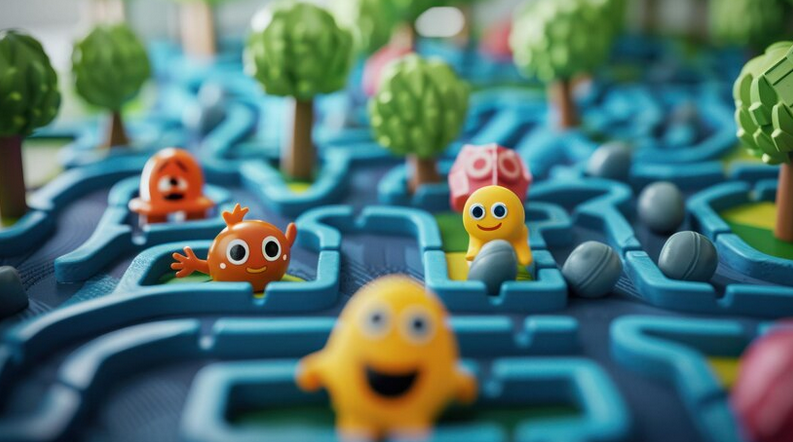
Game elements in marketing are based on psychological aspects such as the desire to compete, sense of achievement and pleasure. 💡 For example, in one of my projects I developed a series of email newsletters, each of which contained a small game element. Subscribers could receive additional bonuses for completing a number of tasks, which increased their interest in the content received.
Examples of gamified newsletters
🎲 Quests and puzzles. In one of the projects, I introduced quests into email newsletters to increase interactivity. Subscribers received tasks and had to solve puzzles to unlock new levels and receive discounts. This resulted in an over 40% increase in content interactions.
🎁 Loyalty program. In other emails, I included loyalty program elements where subscribers could earn points for participating in promotions and receive benefits such as exclusive offers. So, I convinced a large number of subscribers to make repeat purchases, which had a positive effect on the overall level of sales.
How to choose a gamification mechanic
When choosing a gamification mechanic, it is important to consider the target audience and the specifics of the business. I dare say that choosing the right mechanics can make a world of difference to the results of your marketing strategy. I would recommend conducting an analysis of the needs and preferences of the audience in order to offer them the most interesting game elements.
🕵️ Needs research. In one case, I analyzed the preferences of subscribers using surveys and behavior analysis on the site. Based on this data, the mechanics of quizzes and competitions were selected, which increased the average check by 25%.
🔄 Engagement through challenges. In another newsletter, I used a challenge strategy where subscribers could complete tasks and share the results on social networks. This created a viral effect and attracted many new subscribers.

Associations and interactions
Gamification allows you to form the necessary associations, increasing the number of interactions with the proposed content. Using game elements, I created a positive brand image and increased the level of trust in the company. The product becomes not just informational, but interactive and exciting.
📈 Success statistics. In my experience, gamified email campaigns often have twice the open and click-through rates of regular email campaigns.
“Gaming techniques make marketing dynamic and memorable,” says Price email marketing expert Dmitry Kolesnik.
Review and recommendations
| What to do | Don'ts |
|---|---|
| 🎯 Research target audience | 🚫 Ignore preference analysis |
| 🔄 Include interactive elements | 🚫 Make mailings uniform |
| 💡 Use different game mechanics | 🚫 Rely entirely on one method |
| 📈 Evaluate results and adjust strategy | 🚫 Do not analyze results |
I believe gamification can be a key element of your marketing mix to drive engagement and audience loyalty. I encourage you to consider introducing gaming elements into your email campaigns to see how it impacts your metrics.
Implementation principles and elements of gamification
Implementing game mechanics in email newsletters, I always strive to create conditions for the simplest possible entry. It is desirable that subscribers do not waste time on additional registrations or transitions, but can immediately join the process. The ideal gaming newsletter, in my experience, takes up no more than 1-2 viewing screens so as not to overwhelm users.

Key elements of successful gamification:
🔸 Fairness and clarity. The explanation of the essence of the game and its rules should be as clear as possible. If the rules are not obvious at first glance, this will immediately discourage participants. It is important that subscribers understand what is required of them and what they will receive as a reward.
🔹 Simplicity. The game element should not be too complex. People join your email list for quick interactions, not to solve complex puzzles. Everything should be intuitive and easy to do.
🔸 Rewards. Both actual and emotional rewards will help motivate participants. For example, valuable prizes, statuses, bonuses or small gifts from the company can significantly increase interest and involvement.
In my experience, unexpected rewards and additional incentives significantly increase subscriber engagement. For example, a time limit for receiving a discount or promotional code is a great incentive to take action.
Which is better to use in practice:
| Helpful | Don't |
|---|---|
| Easy login without unnecessary registrations | Complex and abstruse rules |
| Compact game size | Long instructions |
| Clear and understandable conditions | Numerous steps |
| Visualization aesthetics | Poor, sad images |
| Actual and emotional rewards | No rewards |
| Engagement through unexpected rewards | Boring and predictable activities |
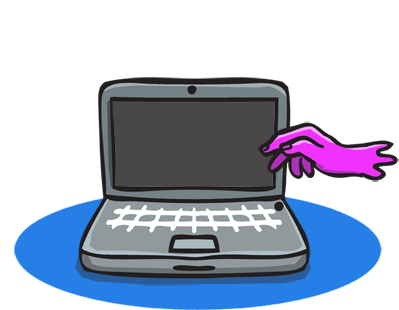
Examples of successful gamified newsletters:
- Rebuses and riddles. We once introduced the “Rebus of the Week” section in our customer mailing list. Every week, subscribers solved a puzzle and received personal promotional codes for a discount. The results exceeded expectations - the level of engagement increased by 30%, and conversion to purchases increased by 15%.
- Seasonal games. During the winter, I used the “Snow Lottery” concept, where each subscriber, by clicking on a snowflake in an email, could win a prize or a discount. This caused a real stir among customers and significantly increased the open rate of emails.
📝 My recommendations:
I highly recommend that marketers and email marketers look into gamification as an effective tool for increasing engagement. Approach its implementation with caution, consider the simplicity and clarity of interaction. And most importantly, don’t forget about motivation and rewards for your subscribers.
Target audience research and analysis
When I first I was thinking about introducing gamification into my email newsletters; it was important to understand who my audience is. This stage of the research turned out to be the most important in the process. To develop gamified newsletters, you need to study your subscribers as deeply as possible. What are their hobbies, what games do they prefer, what are their interests and level of gambling.

Some of the steps I took:
- ✍️ I created a detailed portrait of the target audience, paying attention to all the little things.
- 📊 Used surveys and focus groups to gather direct feedback.
- 🎮 Analyzed the gaming preferences of my audience to find the most attractive game mechanics.
- 🏆 Determined which reward best motivates my subscribers.
Once I understood my audience, I was able to choose mechanics that they would find enticing. For example, my subscribers liked quizzes based on their interests and challenging quests with valuable prizes. It’s important to remember that the right game elements can hold the attention of your subscribers and keep them interested in the long term.
PENETRATE the mind of your audience and you'll be one step ahead of everyone.
Recommended practices:
- Conduct detailed audience research
- 🕵️ Use surveys and behavior analysis
- 🎁 Determine appropriate reward
Not recommended:
- 📉 Ignore audience interests
- Guessing about subscribers' favorite games without analysis
Determining gamification goals in email newsletters
When I worked on introducing gamification, a very important stage was identifying clear goals. It is important to practice not just entertainment, but to use games for specific business purposes. For example, using gamification, I improved customer loyalty, increased sales, and moved users to the next stage of the sales funnel.

Here's what I did:
- 🤝 Increased customer loyalty through regular gaming activities.
- 📈 Increased sales by offering users discounts and special offers for participating in games.
- 📝 Motivated subscribers to move to the next stage of subscription using the mechanics of receiving bonuses and gifts.
The entertainment part itself should be supported by clear objectives. Entertaining your subscribers is great, but without a specific goal, such as increasing the average check or expanding your customer base, you will not achieve the desired result.
The purpose of my gamified newsletter was aimed at attracting new customers and increasing their loyalty. I held several competitions and games, which resulted in an improved client base and increased coverage.
BE PURPOSE and all your efforts will pay off.
Recommended practices:
- Clearly define business goals
- 🎯 Link gamification to specific tasks
Not recommended:
- 🚫 Based only on the entertainment element
- Have no clearly defined goals
Idea Search and Concept Development
Once I've defined my goals and analyzed my audience, it's time to search for an idea and develop a concept . This is the stage where your creativity and analytics must come together.

I used the data I received to create a corresponding idea. First, I mentally imagined the game, thought through the content, wrote texts and selected pictures. Developed a concept using mind maps to visually structure all game elements.
The selection of engaging stimuli was also an important step. Prepared texts for emails, as well as graphic elements of the game. To develop an accurate and understandable game scheme, I used mind mapping.
Here's what I implemented:
- 🎨 I thought through the concept to the smallest detail and created a diagram games.
- ✍️ Prepared texts and pictures for each phase of gamified content.
- 📋 Used mind maps to visually organize game elements.
- 🎁 Identified engaging incentives and rewards for participants.
Developing the game concept required creativity, but the data collected during the research and analysis phases guided me and helped me avoid mistakes.
DESIGN GAMES WITH GOALS IN CONSIDERATION, and the result will be worth all your efforts.
Recommended practices:
- Creative approach to concept development
- 📑 Using mind maps to structure ideas
Not recommended:
- 🔄 Copy ready-made ideas without adapting to goals
- Neglect the importance of engaging elements
Choosing a Game Strategy
I realized that the next steps involve choosing the right game strategy. Taking into account the characteristics and interests of my audience, as well as my business goals, I chose several strategies. For example, the competitive elements were especially attractive to the most gambling part of my audience, while for others I offered competitions for the best review.

With these thoughts in mind, I chose the following strategies:
- 🏆 Conducting competitions with valuable prizes.
- 💬 Competitions for the best review for active subscribers.
- 📢 Referral competitions for socially active users.
Examples of game mechanics I used:
- ✔️ Surveys and tests for quick engagement.
- 🧩 Quizzes with relevant questions.
- 🔍 Quests with promotional codes, where subscribers need to assemble a word from letters hidden in images.
This proved successful as each subscriber could find something to suit their taste, resulting in improved engagement.
USE A VARIETY OF MECHANICS and attract the maximum number of users.
Recommended practices:
- Selecting gaming strategies based on audience preferences
- 🌟 Taking into account the characteristics and percentage of gambling of subscribers
Not recommended:
- 🎭 Applying the same strategies to all
- 🔄 Ignoring performance analysis
Implementation, testing and improvement
This stage was the culmination of all my work. The introduction of gamification elements requires a careful approach. I first announced the launch of the game not only in the email newsletter, but also on the website and social networks. I sent out the announcement to the entire subscriber base, and then monitored the results and made adjustments.

Here's what I did:
- 📢 Announced the game on all available platforms.
- 📧 Sent out announcements to subscribers, and then repeated the announcement for those who did not open the letters.
- 🔎 Carefully monitored the results, analyzed them and made changes if necessary.
Gamification elements can be implemented with the help of professional developers or use specialized services such as Brevo, Attio, Selzy. They provide large libraries of templates and the ability to collect detailed statistics, which helps to identify the strengths and weaknesses of the implemented mechanics.
As a result, I saw significant improvements in engagement and a positive response from subscribers. Testing and making changes helped achieve the desired results.
BEING ATTENTIVE TO THE DETAILS will ensure a successful implementation.
Recommended practices:
- Announce the game on all platforms
- 📊 Constantly monitor and analyze your results
Not recommended:
- 📉 Skip testing and analysis
- Rely on one-time mailing only
Effective examples of using gamification in email marketing
Wheel of fortune from « Eldorado"
One of the most striking examples of the use of gamification in email newsletters is activation from Eldorado using the wheel of luck. I remember how much it increased follower engagement. Right in the letter, subscribers could spin the wheel and find out what prize they would get. Prizes included equipment, bonuses and discounts on purchases. ✅📧
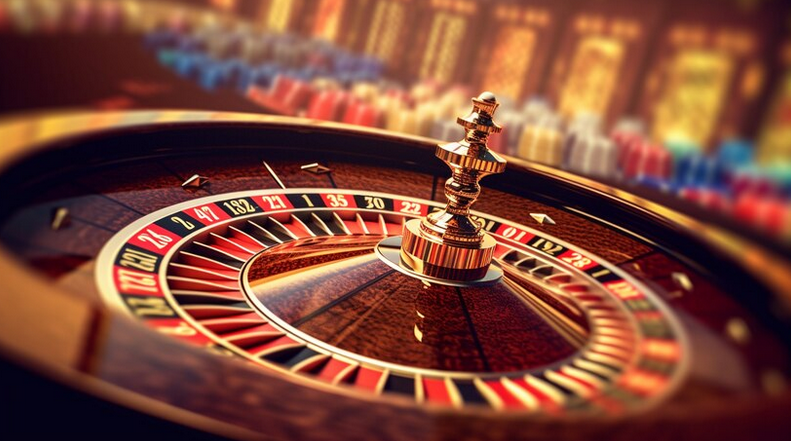
This was a very good decision, since each subscriber was given the opportunity to receive additional spins and gifts for completing special tasks. For example, leave a review, share a promotion on social networks, and so on. This integration of game elements gave us the opportunity to significantly increase audience interest in letters and interaction with the brand.
Useful tips:
- 🏷️ Use bright and attractive visual elements.
- 🔄 Offer additional bonuses for activity.
- 📊 Scale your success through analytics and optimization.
Battle of gifts from Prom.ua
The Prom.ua brand used an interesting approach by organizing a Gift Battle for its subscribers. Subscribers were asked to go to the promotion page and choose which team they wanted to play for - women's or men's. 🏃♂️🏃♀️
As a result, several tasks were proposed that had to be completed in order to have a chance to win a discount of up to 1000 UAH. I believe this approach not only increased engagement, but also increased brand loyalty. The division into teams added a spirit of competition, which always has a positive effect on the level of involvement.
Recommendations:
- ⭐ Create team events to boost your competitive spirit.
- 💸 Offer tangible benefits for participation.
- 📈 Track behavioral metrics to optimize future campaigns.
Test game from SunRose
Selling flowers sometimes can be a challenging task, especially when clients are not sure which bouquet to choose. SunRose offered their subscribers to take an interesting labyrinth test with questions that would help them determine which bouquet was right for them. 🥀🏵️

All this was done directly in the letter, which greatly simplified the selection process and increase sales. In addition, such a test became a kind of entertainment, which helped improve the client’s attitude towards the brand. I highly recommend using ideas like this because they help customers and automatically increase their loyalty.
Useful practices:
- 🏆 Integrate surveys that are useful and informative.
- ➰ Create engagement in your emails rather than sending customers directly to your website.
- 🌹 Show results in the context of your product offerings.
Quest with a promotional code from GiftMall
In a New Year's letter GiftMall offered subscribers an exciting quest to find a promotional code hidden in an image. The prize, an 11% discount, was hidden in the picture, which required attention and creativity from subscribers. 🕵️♂️📸
This email experiment showed that even simple games like this can generate a lot of interest and increase engagement with emails. I noticed that the number of clicks and the time spent on the letter increased significantly thanks to this idea.
Recommendations:
- 🧩 Run creative and memorable promotions.
- 🔍 Use game mechanics to improve engagement.
- 📑 Keep the game simple and accessible.
Simulator from “My Garden”
Incredibly addicting The game for gardeners was offered by the My Garden store in its New Year's newsletter. Subscribers could plant, grow and decorate a Christmas tree, and then share their results with friends. 🎄👩🌾

This simulator not only captivated, but also added elements of competition , encouraging followers to interact with the brand and share results on social networks. This kind of gamification creates a positive emotional response and improves brand association.
Useful tips:
- 🧑🌾 Use seasonal themes.
- 🤝 Involve your subscribers in the process and motivate them to share the results.
- 🎯 Create games that resonate with the interests of your target audience.
Various mechanics from “Own Company”
Company uses a variety of game mechanics in its newsletters, from riddles to physics puzzles. For example, subscribers were asked to solve a problem based on the laws of physics in order to receive a discount promo code. 📚🎲
I believe this approach maintains continued interest in email newsletters and provides subscribers with a sometimes more challenging, but always fun, challenge. This helps promote the brand as innovative and caring about the intellectual development of its customers.
Useful practices:
- 🔬 A variety of mechanics is important to keep things interesting.
- 🧠 Use educational games to add value to your newsletter.
- 📊 Maintain a balance of difficulty and accessibility of tasks.
Puzzles from Kiwi
Kiwi travel company regularly pleases your subscribers with easy and exciting puzzles. I especially liked how they used associations to allow subscribers to guess the names of cities and countries. 🌏🧩
Not only did this lead to a significant increase in engagement, but it also helped improve overall brand awareness. Games like these make emails more fun and memorable, making it more likely that subscribers will engage with emails more in the future.
Useful tips:
- 📍 Use themed puzzles related to your products.
- 🤗 Focus on the enjoyment of the game.
- 🌍 Add educational elements to tasks.

Quest by Makeup
Makeup attracts its audience with interesting quests. Subscribers receive hints in the letters, and the gameplay itself takes place on the online store’s website. This strategy helps to engage your audience and increase website traffic. 💄🛍️
Quests also help increase the duration of site visits and the depth of page views, which ultimately leads to increased conversions. I firmly believe that using click-through game mechanics helps increase engagement and sales.
Useful tips:
- 🌐 Organize quests that lead to the site.
- ✨ Offer meaningful prizes for completing tasks.
- 📊 Track data to analyze methods that produced results.
Review:
| Practices | Examples | Recommendations |
|---|---|---|
| Use standard gaming techniques | Wheel of fortune, tests | Bright elements, bonuses, engagement |
| Create innovative and interesting tasks | Quests, puzzles | Creative range, maintaining interest |
| Maintain a balance between complexity and simplicity | Puzzles, simulator | Affordable but fun tasks |
| Offer tangible benefits | Discounts, bonuses | Performance monitoring and analysis |
| Integrate elements into emails | Direct interaction | Increased Engagement and Simplicity |
These examples of successful gamification mechanics showed how they can be effective in increasing customer engagement and loyalty. I hope they inspire you to incorporate gaming elements into your emails and help you improve your engagement with your subscribers.
Gamification in email campaigns: Tips and implementation
I can say with confidence that simplifying the interaction in email campaigns will significantly increase their effectiveness. When I first started using game mechanics, I realized how important it was to offer clear and achievable goals. Tasks should be easy to complete and bring joy to users. First of all, avoid complex technical solutions so as not to scare off subscribers.

🤹♀️ Interactive makes a difference
Adding interactivity to email campaigns brings freshness and dynamism. AMP technologies allow subscribers to participate in the game right inside the email, without leaving it to go to other tabs. This significantly reduces unnecessary actions and increases engagement.
Mini-games inside emails are often the main driver of our customers' returns.
Mood and quirkiness: let the letters stand out
I would advise you to make your message unique and memorable. Every day, users receive dozens of identical emails. It is necessary to somehow stand out against this background. Come up with unusual titles with a hint of the game. For example, the phrase “Guess and win!” can arouse curiosity and attract attention.
✨ Choose mechanics that suit your target audience
Important so that the game mechanics match the interests of your target audience. I myself very often focused on specific business goals and tied the gameplay to the product. Even at different stages of the sales funnel, gamification helps subscribers move through the conversion path faster.
Let me share some useful practical tips:
Helpful practices:
📌 Clear goal
- Maximum clear and achievable goal
📌 Interactive elements
- Implementation of AMP technologies
📌 Unusual headers
- Titles hinting at the game
Avoid:
❌ Complex functionality
- Avoid technically complex solutions
❌ Monotonous letters
- Don't make letters the same type

I believe that proper gamification in email campaigns helps not only increase audience engagement, but also strengthen the connection with the brand. Use my experience and recommendations, and your interaction with subscribers will be unforgettable.
Gamification is designed to engage users and make content more interesting and accessible.
By incorporating these strategies, I have seen remarkable results in my projects and believe they will benefit your email marketing campaigns as well.
Increase in sales due to the emotional component of mailings
I would like to note that gamification in email campaigns shows significant results in practice. This is a great strategy for attracting audience attention and increasing subscriber activity. Considering that modern users are surrounded by a huge amount of information, a non-standard approach should be focused on the nature and needs of the target audience.

🎲 Real life examples
🔹 Let me remind you of an incident with one of our campaigns to promote a new product. We used game elements in the form of a virtual quest, where subscribers had to complete tasks and receive bonuses and discounts for this. Already in the first newsletter, there was a sharp increase in the open rates of letters - by more than 30%, and the activity of subscribers in general increased by 40%.
Gamification elements not only captivate, but also significantly increase audience loyalty.
🔹 In another project, a survey of subscribers about new products was presented as an interactive quiz, in which participation was awarded points for participation in a prize draw. Result? There was a 50% increase in the number of customers completing the survey, which gave us additional information to improve our product and promotion methods.
🌟 How and why to implement gamification
I'm sure that introducing games into mailings requires a clear plan and understanding of your audience. First of all, you need to conduct detailed preliminary research to find out your “pains” and desires of your subscribers.
Use the following steps:
📊 Target Audience Analysis:
- Find out what motivates your subscribers.
- Determine their age group, interests and preferences.
📝 Gamification content planning:
- Create interesting and simple tasks or games.
- Set up a reward system that motivates repeat engagement.
✉️ Create a mailing list:
- Design your letter in a stylish and attractive manner.
- Make sure the game element is immediately noticeable and easy to understand.
📊 Analysis of results:
- Track open rates and activity.
- Compare data before and after implementing gamification.

🤓 My recommendations
For gamification to have maximum effect, I recommend:
🔸 Conduct surveys and find out what exactly attracts your subscribers.
🔸 Keep game elements simple and accessible.
🔸 Constantly advertise results and share the successes of participants, thus creating social proof.
Recommendation table:
| Useful practices | What not to do |
|---|---|
| Studying the target audience | Ignoring analytics |
| Simplicity of game elements | Overcomplication of the process |
| Transparent reward system | Lack of motivation and rewards |
I hope that following these recommendations will allow you to effectively use gamification in your newsletters, increasing not only audience engagement, but also sales volume.
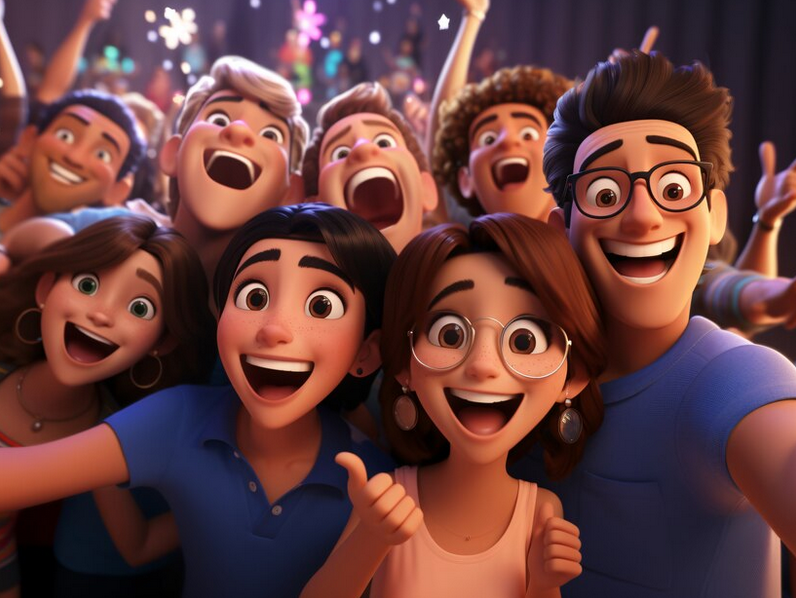
Experience Dyson
Dyson is a world-renowned home appliance manufacturer specializing in innovative and high-tech products such as vacuum cleaners, fans, dehumidifiers and hair dryers. Dyson is widely recognized for its unique designs and high quality products, making it one of the leading companies in the global market.

Main goals and objectives of the project:
- Increased user engagement.
- Increasing open rates and clicks on email campaigns.
- Increasing customer loyalty through interesting and interactive elements.
Description of the main problem: The company was faced with the problem of reducing audience engagement in email campaigns . Despite high-tech and innovative products, users did not show sufficient interest in sales letters, which negatively affected sales and customer loyalty.
Characteristics and interests of the target audience:
- Age: from 25 to 45 years.
- Interests: modern technologies, comfortable lifestyle, home interior improvement.
- Mostly women and men with above average income.
- Active Internet users who often buy goods online.

Basic principles and elements of gamification:
To solve the given problems, it was decided to introduce gamification elements into email newsletters. The following principles were used:
- 🎯 Points Pricing: per purchase or participation In the promotion, users received points that could be exchanged for discounts or gifts.
- 🏆 Rewards and Incentives: Create a system of motivation through rewards for completing certain actions, such as participating in surveys or giving feedback product.
- 🧩 Interactive elements: Include mini-games and riddles that users could solve in newsletters.
Project implementation and results
Concept developed: Several interactive formats were developed, including wheels of fortune, interactive quests and quizzes. Each element was integrated into the company's weekly newsletters.
Choosing a gaming strategy: Different strategies were used to various types of mailings. For example, promotions used wheels of fortune 🌀, and newsletters included quizzes with the opportunity to win discounts.
Testing and improvement: Through regular analysis and testing, gamification strategies were changed and improved in real time. This helped the company quickly respond to changes in user tastes and preferences.
Actual achievements and results:
- 📈 Increase in email open rate by 35% within three months of introducing gamification.
- 💬 Increased user engagement by 50%, which was reflected in an increase in the number of responses to mailings and participation in promotions.
- 🛒 Sales increase by 20% due to increased customer activity and brand loyalty.
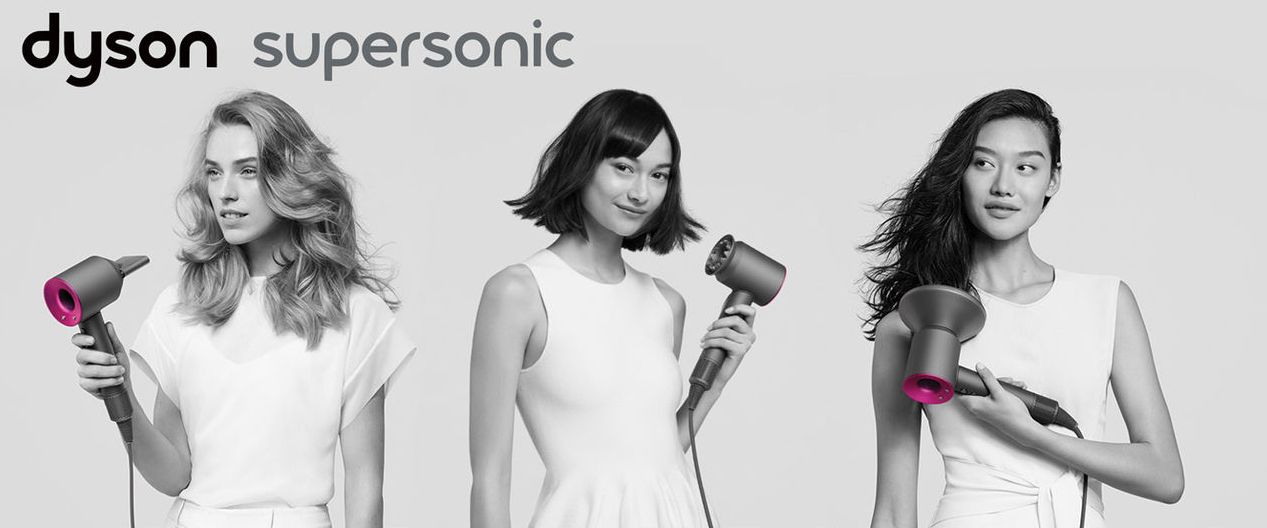
Final indicators:
| Indicator | Before the introduction of gamification | After the introduction of gamification |
|---|---|---|
| Open rate | 25% | 60% |
| Increase in engagement | 20% | 70% |
| Sales increase | 150% | 170% |
It is important to note that the main key success of the project was an in-depth study of the target audience and the flexibility of the approach when introducing gamified elements.
Examples of successful solutions:
- 🚀 Wheel of fortune with the ability to instantly get a discount on your next order.
- 💎 Loyalty rewards: for every purchase, customers received bonus points that could be exchanged for gifts.
- 🔍 Interactive quests: Users had to solve riddles to get a discount code.
How to increase the effectiveness of gaming email campaigns:
- Update your content regularly to keep it interesting.
- Take feedback received and implement improvements.
- Maintain high quality interactive elements and rewards.

Frequently asked questions on the topic: How gamification in email campaigns can improve engagement
What is gamification in newsletters?
Gamification in emails is the use of game elements and mechanics in emails to increase recipient engagement and improve interaction with the brand.
Why is gamification important for email campaigns?
Gamification makes emails more interesting and interactive, which helps increase engagement, open rates, and CTR.
What examples of successful gamified email campaigns exist?
Examples of successful gamified newsletters include Wheel of Fortune from Eldorado, Test from SunRose and others.
What audience is gamification suitable for?
Gamification is suitable for a variety of audiences, but is especially effective among young people and people who value interactive and fun ways to interact with brands.
What are the basic principles and elements of gamification?
The core principles include goal setting, reward and engagement, and elements can range from points, levels, challenges, prizes and leaderboards.
What are the stages of developing a mailing list game?
The stages of game development include researching the target audience, identifying goals, searching for ideas and developing a concept, choosing a game strategy, implementation, testing and improvement.
How to increase the effectiveness of gaming email campaigns?
To increase the effectiveness of gaming email campaigns, it is necessary to take into account the interests of the audience, offer valuable prizes, conduct regular testing and improve gameplay.
What are the main mistakes when implementing gamification in mailings?
Common mistakes include lack of a clear goal, inappropriate game content for the target audience, and lack of concept testing.
How long does it take to develop a gamified newsletter?
The time it takes to develop a gamified newsletter depends on the complexity of the concept, but on average it can take from several weeks to several months.
Can you use gamification in B2B emails?
Yes, gamification can be used in B2B mailings. The main thing is to adapt the game elements to the interests and needs of the business audience.
Thank you for reading and reaching new heights! 🎉
Now, dear reader, you are real professionals in gamifying newsletters. You realize that adding game elements to your email campaigns is not only fun, but also good for engagement. Your subscribers will be more happy to open your letters, like children before a holiday. 😊
It's great to have the knowledge that turns simple mailings into exciting adventures. If you have ideas or questions, leave a comment - I always welcome your feedback!
Author: Rita Kochevskaya, independent expert of the Elbuz company. My texts are the magic that turns ideas into automated success of an online store. Welcome to the world of my words, where every phrase is a step towards masterfully effective online business!

- Glossary
- The importance of gamification
- Target audience research and analysis
- Determining gamification goals in email newsletters
- Idea Search and Concept Development
- Choosing a Game Strategy
- Implementation, testing and improvement
- Effective examples of using gamification in email marketing
- Gamification in email campaigns: Tips and implementation
- Increase in sales due to the emotional component of mailings
- Experience Dyson
- Frequently asked questions on the topic: How gamification in email campaigns can improve engagement
- Thank you for reading and reaching new heights!
Article Target
Show the importance of using gamification in email newsletters and inspire the use of game mechanics to improve interaction with the audience.
Target audience
Marketers, email marketers, and business owners looking for ways to increase subscriber engagement.
Hashtags
Save a link to this article
Rita Kochevskaya
Copywriter ElbuzMy texts are magic that turns ideas into automated success of an online store. Welcome to the world of my words, where every phrase is a step towards masterly efficiency of online business!
Discussion of the topic – How gamification in email campaigns can improve engagement
An explanation of what gamification in email campaigns is, why it is important, and how it can improve recipient engagement. Examples of successful gamified newsletters.
Latest comments
15 comments
Write a comment
Your email address will not be published. Required fields are checked *
















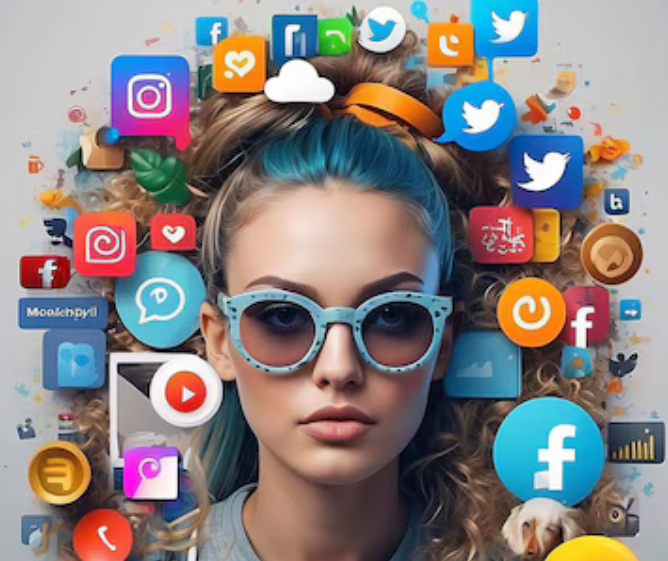






Рита Кочевская
Gamification in newsletters is the process of adding game elements to standard email campaigns to make them more interesting and interactive. For example, you can add contests, quizzes, or mini-games to activate readers. Examples of successful email campaigns include companies such as Duolingo and Starbucks.
John Smith
Rita, great explanation! What do you think is the most effective element of gamification in increasing engagement? 🎯
Julia Mueller
I read somewhere that integrating achievements and rewards can motivate subscribers to engage more with content. This is true?
Miguel Sanchez
I agree with Julia! Our company also decided to try adding such elements. So far the results are impressive - open rates and click-through rates have increased.
Pierre Dubois
Do you think it’s worth adding gaming elements to every newsletter or is it better to limit it to special cases?
Luca Rossi
In my opinion, if you go too far, you can easily lose the interest of the audience. It is better to experiment carefully and see the reaction.
Krzysztof Kowalski
These trends of yours are just funny! People want facts and information, not games.
Anna Kowalska
Krzysztof, sometimes game elements can make complex topics more accessible and interesting. It all depends on the audience!
Alicia Garcia
We're currently testing gamification for our fitness newsletter. Subscribers really like the format of quizzes and challenges. A fun way to get people involved.
Рита Кочевская
John Smith, I think the most effective element of competition is leaderboards and achievements. They give subscribers a purpose and motivate them to continue engaging.
Hans Müller
An interesting approach, but how then to measure the success of such a campaign? What metrics should you use?
Рита Кочевская
Hans Müller, good metrics are email open rates, CTR (click-through rate), engagement (for example, participation in games/quizzes) and, of course, conversion. All this will help evaluate the success of the campaign.
Eva Novak
I think gamification is perfect for education newsletters. I once received letters like this from an online school, and it was super interesting! 💡
Sofia Petrenko
Rita, are there any pitfalls when introducing gamification into newsletters? What should you pay attention to?
Рита Кочевская
Sofia Petrenko, it’s important not to overdo it. Gamification should not distract from the main content, and all game elements should be relevant to the topic of the newsletter. It is also worth considering the technical side and adapting games for different devices.